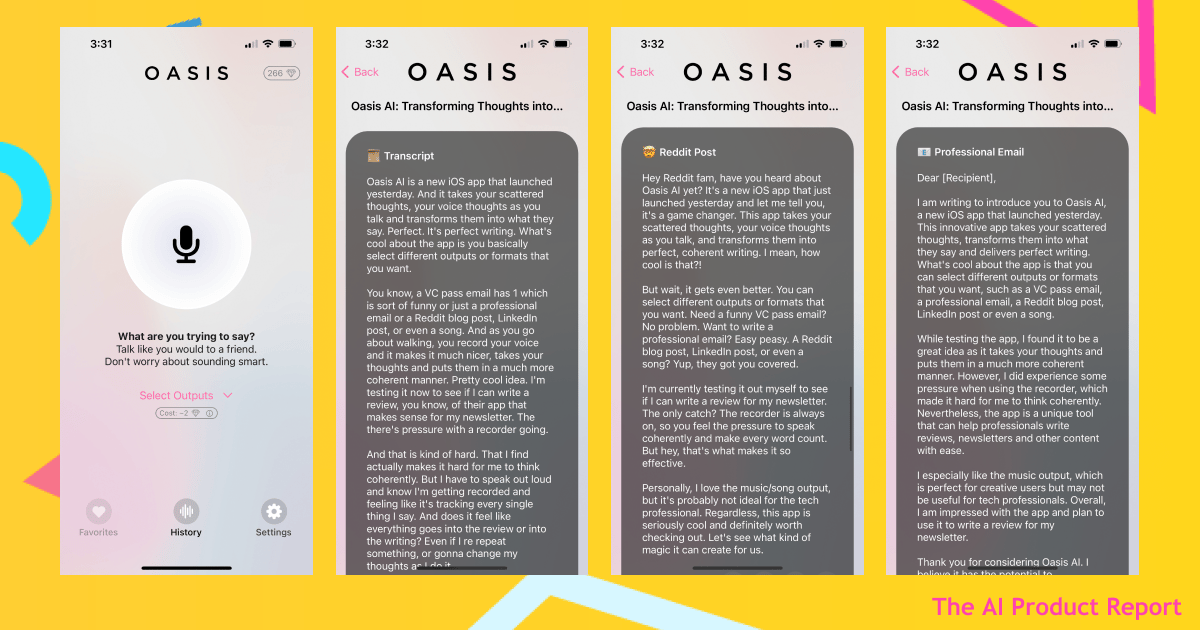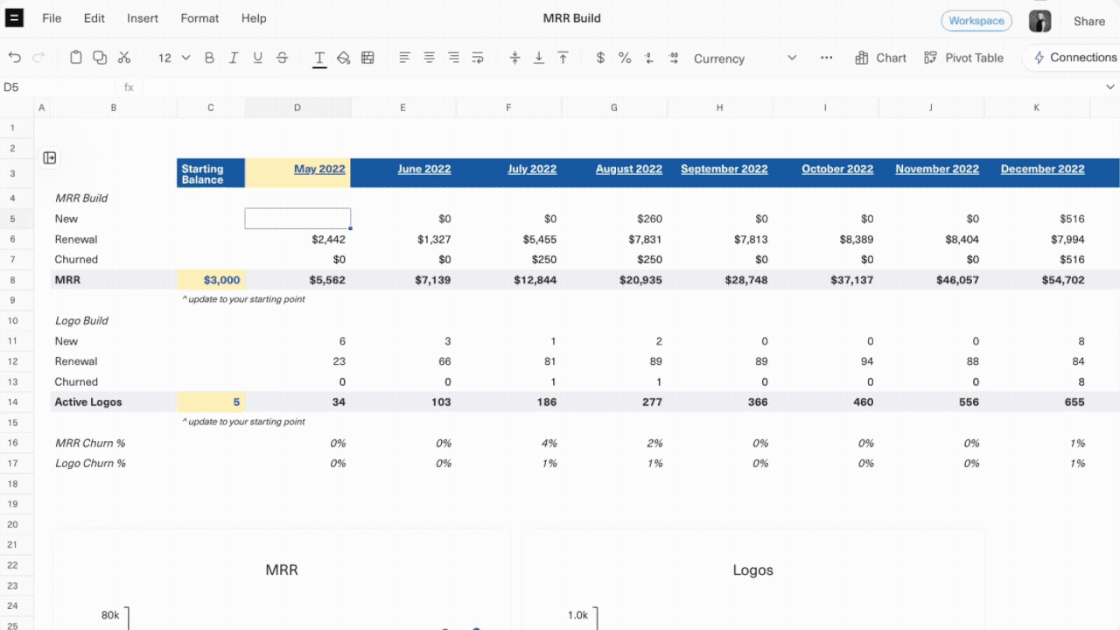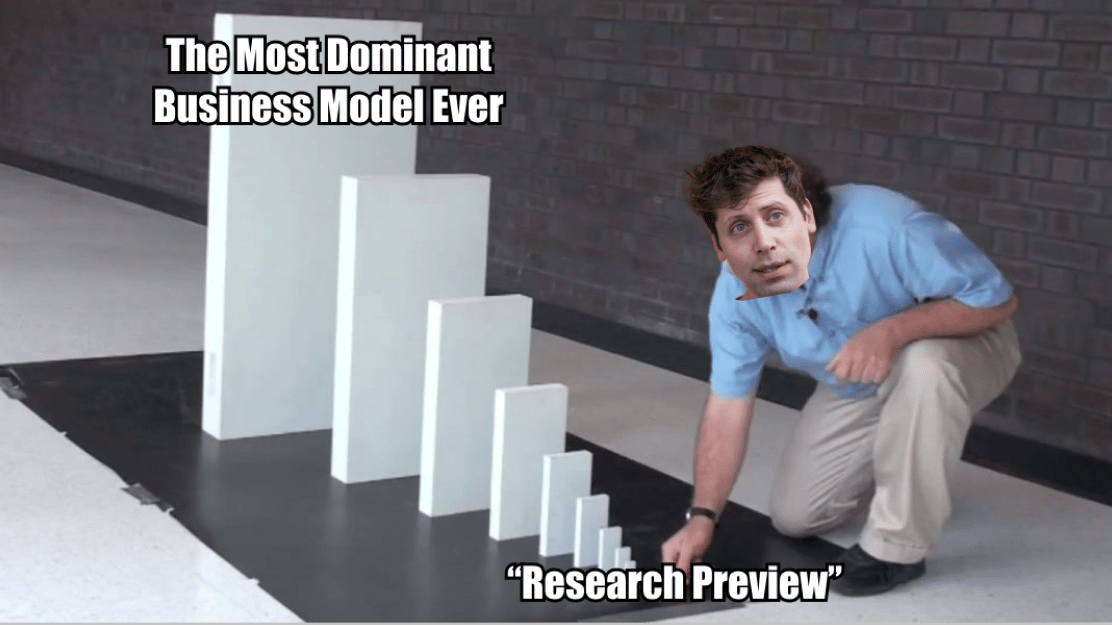A weekly newsletter that highlights new and innovative AI products that are worth exploring.
Hey {{FirstName | hey}}!
I’ve been a bit distracted this week because the new family e-bike is here and ready to go. It has a badass rain cover…because you know, Seattle. The goal is to avoid getting a second car and I think we’ll manage it. Sadly, it comes with no AI features 😜
In this week’s issue:
Oasis, a speech to writing iOS app, is my product of the week
Command+K is bringing the AI fire to spreadsheets
Pod helps salespeople close deals (or as salespeople say…“crush it”)
Plus, a recommended read on the paper that kicked off the AI Revolution

Because I know you want to see a pic of the bike
PRODUCT OF THE WEEK
After testing dozens of new AI products this week. Here’s my top pick.
Oasis AI: Transform speech into writing. A very simple, yet powerful iOS app that helps you take the creative thoughts you have throughout your day and form them into something more useful and structured. All you do is record your voice as you talk through the idea that you want to put down on paper. After recording, you select the output type you want the raw transcript transformed into. The outputs ranges from the traditional, such as a professional email, LinkedIn post, or blog outline, to the unique, such as a song. Oasis than uses AI to morph your transcribed thoughts into a more fully formed output.
I played around with it yesterday and found it very useful in capturing ideas on the go. In the past when I’ve been out on a walk and wanted to jot something down, I’ve used voice to text dictation in Google Docs, but I often found that the creative juices get stifled when you are paying close attention to how you phrase everything so that the doc isn’t a jumbled mess of words. Not a problem when using Oasis.
I also like how they started as a side project to generate scripts for TikTok videos, but realized they’d stumbled on a much broader use case. Per Matt Mireles, the co-founder and CEO: “Tbh, the app started as a script generator for TikTok videos. It was supposed to be a side project while we were working on AI research related to speech-to-video. However, once we built the prototype, it was obvious that we’d stumbled onto a much bigger, more powerful idea.”
[Public Launch | $4.99 or $14.99 per month]

Oasis taking a voice transcription and turning it into a Reddit post and email

RUNNER UPS
Two more AI products that are worth your time.
Command+K from Equals: Bringing AI fire to the spreadsheet. Equals is a spreadsheet startup challenging Microsoft Excel and Google Sheets by building a next-generation spreadsheet that seamlessly connects to your data sources. This week they introduced a feature called Command+K which is as if AI and a shortcuts menu had a baby. Their quick search menu makes it super speedy to create and format a complex spreadsheet, and their “smartfill” AI takes it to another level by suggesting formulas that are much more helpful than Google Sheet’s formula wizard has ever been. So far, I’ve been very impressed with it’s suggestions. I know it can feel daunting to move your workflow from Excel or Sheets to Equals, but it’s certainly worth considering if you spend most of your day in spreadsheets.

Equals' Smartfill feature
Pod: An AI copilot designed to help salespeople crush it. Forgive my use of "crush it," but I can't shake it from my sales days vocab. Anyways, Pod uses generative AI and automation to manage your sales pipeline. It learns from your pipeline and identifies winning trends so that it can recommend which deals to focus on, how to best engage the prospects, and generates personalized emails to them. It can also plug into your Salesforce and recommend which fields to update to speed up the data entry that so many salespeople despise. It only works with Salesforce at the moment. [Beta | 6 month Free Trial]

OTHER AI THINGS HAPPENED
Some other notable news from this week
CodeWhisperer: Amazon released their competitor to Github’s Copilot (a programing assistant. Early commentary from developers is that Github’s product is superior.
Auto-GPT: An experimental open-source application showcasing the capabilities of the GPT-4 language model has been getting a lot of attention this past week. Auto-GPT chains together LLM "thoughts", to autonomously achieve whatever goal you set. It’s capable of performing actions on the internet and your computer, and can chain them together without requiring your input. So it can search the internet on your behalf, execute tasks like saving files, and demonstrate some decision-making. An interesting project to keep an eye on.
Sybil: A tool developed by scientists at MIT and the Mass General Cancer Center is showing promising results in detecting early signs of lung cancer in CT scans. In one study, it accurately predicted whether a person would develop lung cancer in the following year 86% to 94% of the time.
Zapier Interfaces: Zapier’s Interfaces product, which has been around for a little while, enables a drag-and-drop way to build visual workflows for any business process, without writing code. They’ve recently added in an OpenAI integration to make it even easier to connect to GPT-3 and DALL-E. I love to see these no-code tools become more powerful.
Animated Drawings: Facebook Research open sourced a project that enables you to bring basic sketches and doodles to life. Definitely one of my favorite demo gifs 😆😆😆


WHAT I'M READING
If you only read one thing this week let it be this.

Attention is All You Need by Packy McCormick
"The paper that kicked off the AI Revolution had a catchy title, as these papers go: Attention is All You Need. Written by a team at Google Brain in 2017, the paper introduced the now-famous Transformer architecture that powers large language models such as OpenAI’s GPT-4. As Chroma co-founder Anton Troynikov explained it to me in our first episode of Anton Teaches Packy AI, Transformers can do a lot just by paying attention to the right parts of the input. They don't need other types of neural network layers, like the ones used for convolutions or recurrent connections, to perform well. Attention is all they need. That same year, in a follow-up to his canonical Aggregation Theory, Ben Thompson wrote Defining Aggregators, to catalog businesses that capture value by controlling demand for abundant resources. Aggregators have three defining characteristics..." NOT BORING

HELP ME OUT

If you enjoyed today's issue (and are feeling generous), can you share it with your friends or colleagues? This newsletter primarily grows from referrals and a referral from you would mean a lot to me.
Refer just ONE person and I'll send you my write-up: "Trends and Opportunities of this AI Inflection Point." In this write-up, I have outlined seven AI trends that I have observed over the past six months, along with the opportunities they present.
Share using your personal referral link:
{{rp_refer_url}}
PS: You have referred {{ rp_num_referrals }} people so far

Until next week! ✌🏻
-Tyler
P.S. Have tips or suggestions for next week's issue? Reply to this email and send them my way.
P.P.S. Interested in having me give you private feedback about an AI product that you are building? Learn more here.
